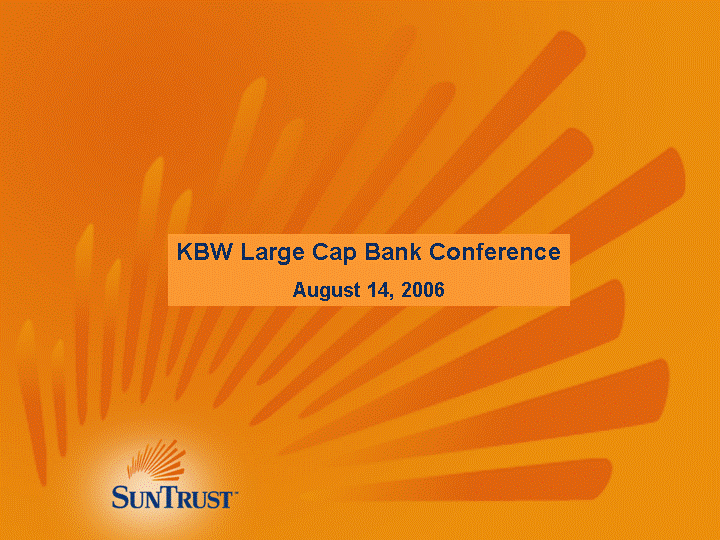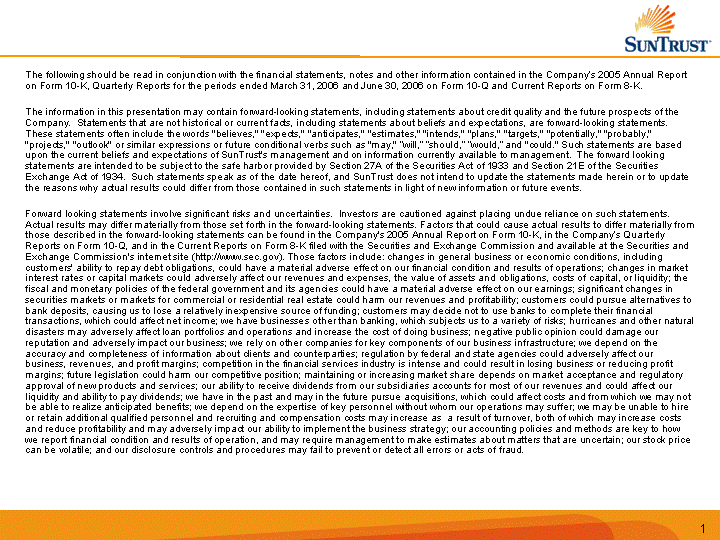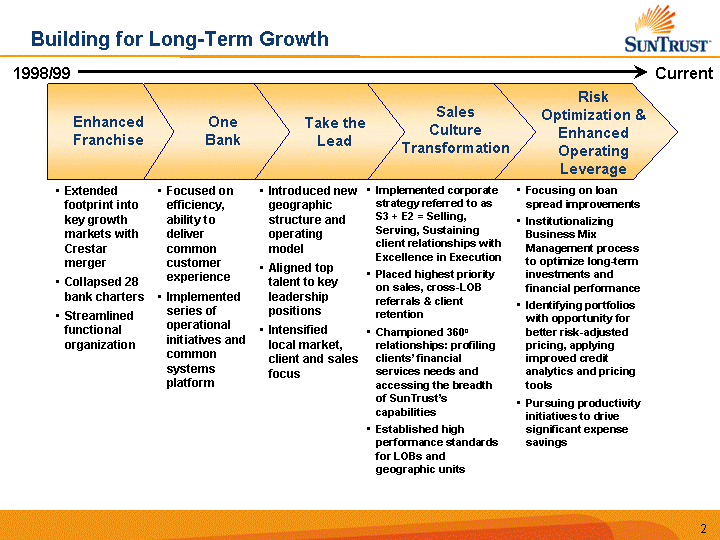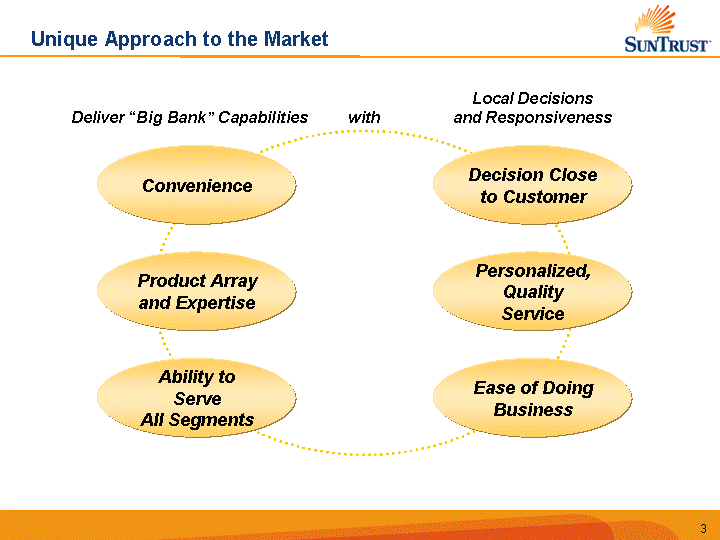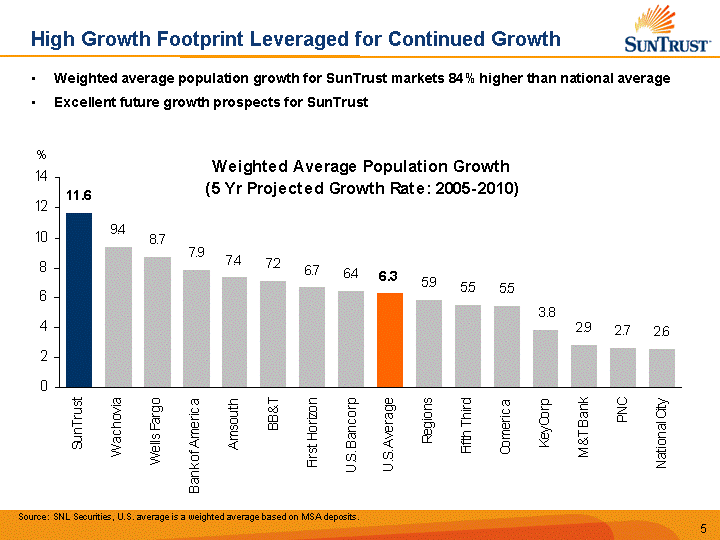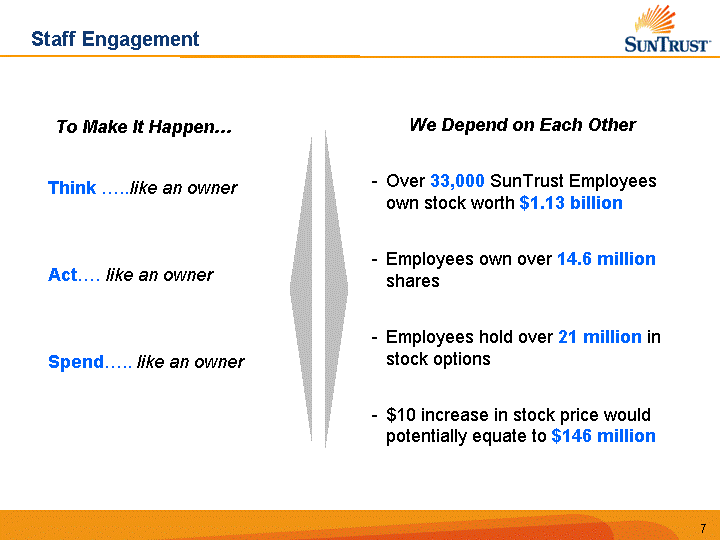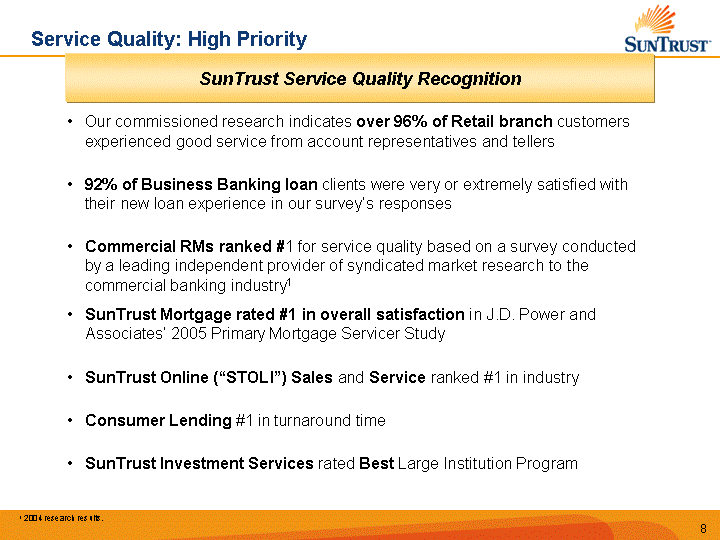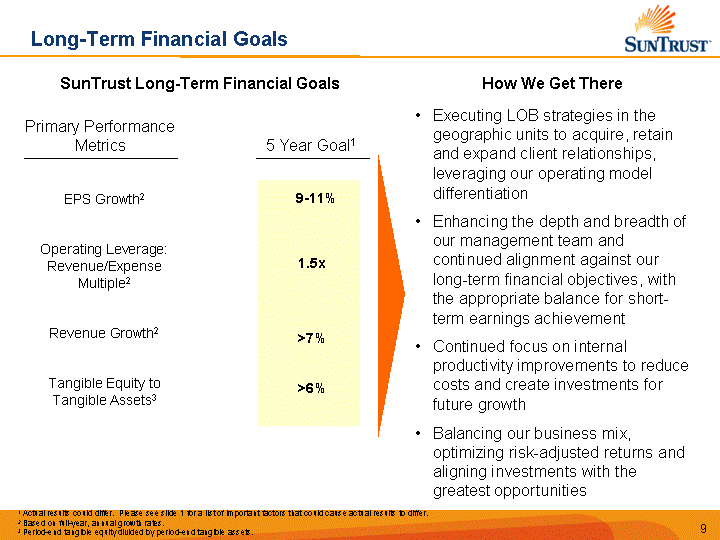| The following should be read in conjunction with the financial statements, notes and other information contained in the Company's 2005 Annual Report on Form 10-K, Quarterly Reports for the periods ended March 31, 2006 and June 30, 2006 on Form 10-Q and Current Reports on Form 8-K. The information in this presentation may contain forward-looking statements, including statements about credit quality and the future prospects of the Company. Statements that are not historical or current facts, including statements about beliefs and expectations, are forward-looking statements. These statements often include the words "believes," "expects," "anticipates," "estimates," "intends," "plans," "targets," "potentially," "probably," "projects," "outlook" or similar expressions or future conditional verbs such as "may," "will," "should," "would," and "could." Such statements are based upon the current beliefs and expectations of SunTrust's management and on information currently available to management. The forward looking statements are intended to be subject to the safe harbor provided by Section 27A of the Securities Act of 1933 and Section 21E of the Securities Exchange Act of 1934. Such statements speak as of the date hereof, and SunTrust does not intend to update the statements made herein or to update the reasons why actual results could differ from those contained in such statements in light of new information or future events. Forward looking statements involve significant risks and uncertainties. Investors are cautioned against placing undue reliance on such statements. Actual results may differ materially from those set forth in the forward-looking statements. Factors that could cause actual results to differ materially from those described in the forward-looking statements can be found in the Company's 2005 Annual Report on Form 10-K, in the Company's Quarterly Reports on Form 10-Q, and in the Current Reports on Form 8-K filed with the Securities and Exchange Commission and available at the Securities and Exchange Commission's internet site (http://www.sec.gov). Those factors include: changes in general business or economic conditions, including customers' ability to repay debt obligations, could have a material adverse effect on our financial condition and results of operations; changes in market interest rates or capital markets could adversely affect our revenues and expenses, the value of assets and obligations, costs of capital, or liquidity; the fiscal and monetary policies of the federal government and its agencies could have a material adverse effect on our earnings; significant changes in securities markets or markets for commercial or residential real estate could harm our revenues and profitability; customers could pursue alternatives to bank deposits, causing us to lose a relatively inexpensive source of funding; customers may decide not to use banks to complete their financial transactions, which could affect net income; we have businesses other than banking, which subjects us to a variety of risks; hurricanes and other natural disasters may adversely affect loan portfolios and operations and increase the cost of doing business; negative public opinion could damage our reputation and adversely impact our business; we rely on other companies for key components of our business infrastructure; we depend on the accuracy and completeness of information about clients and counterparties; regulation by federal and state agencies could adversely affect our business, revenues, and profit margins; competition in the financial services industry is intense and could result in losing business or reducing profit margins; future legislation could harm our competitive position; maintaining or increasing market share depends on market acceptance and regulatory approval of new products and services; our ability to receive dividends from our subsidiaries accounts for most of our revenues and could affect our liquidity and ability to pay dividends; we have in the past and may in the future pursue acquisitions, which could affect costs and from which we may not be able to realize anticipated benefits; we depend on the expertise of key personnel without whom our operations may suffer; we may be unable to hire or retain additional qualified personnel and recruiting and compensation costs may increase as a result of turnover, both of which may increase costs and reduce profitability and may adversely impact our ability to implement the business strategy; our accounting policies and methods are key to how we report financial condition and results of operation, and may require management to make estimates about matters that are uncertain; our stock price can be volatile; and our disclosure controls and procedures may fail to prevent or detect all errors or acts of fraud. |
